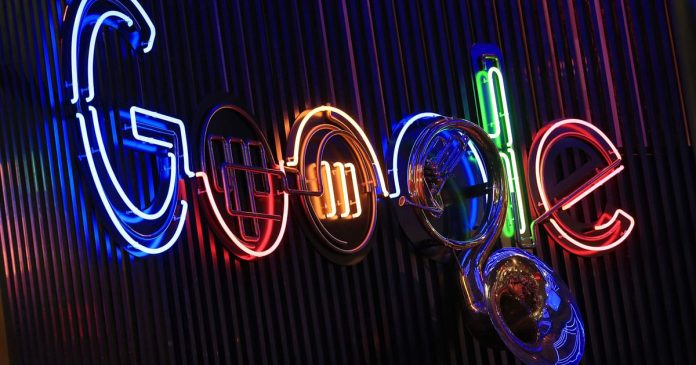
This article has been written by Jasmine Sharma, pursuing a Diploma in Cyber Law, FinTech Regulations, and Technology Contracts from LawSikho.
Table of Contents
Introduction
Have you wondered what happens when something defamatory is put on social media? You might think that probably the editor and the writer would have to pay the price. But don’t you think that the internet service provider(ISP) should also bear responsibility since it is the one who is allowing the publication and contributing to the dissemination of defamatory pieces? A similar situation has arisen in the most celebrated case of Google India Pvt. Ltd vs Vishaka. 
Facts of the case
Here the dispute was related to the complaint of criminal defamation. A defamatory article was published by the coordinator of “Ban Asbestos India”, a google group. The complainant company, Asbestos Cement Sheets alleged that the article has defamed his image in the market and has affected its business. The Complaint is a public limited company engaged in the business of manufacturing and selling asbestos cement sheets with seven manufacturing plants and more than twenty-five marketing offices all over India.
The cause of action arose;
(i) after the article “Visaka Asbestos Industries making gains” dated 31.07.2008 on the google group. The complainant pleaded that the article was defamatory in nature and it harmed the complaint’s reputation in the eyes of ordinary people. Complainant also asserted that a service provider like Google India Pvt. Ltd. has made it easier than ever before to disseminate defamatory statements without exercising due care and diligence to prevent it.
(ii) on 21st November 2008 a second article was also published titled “Poisoning the system: Hindustan Times” posted on the “Ban Asbestos India” google group.
(iii) when the notice to withdraw such articles was issued by the complainant.
High Court findings
Criminal Liability of Network Service Provider: Section 79 of Information Technology Act, 2000 exempts its liability only on proving that the offense or contravention was committed without its knowledge or that ISP has exercised all due care and diligence to prevent the commission of the offense or contravention.
- Whether Google India Pvt Ltd or Google LLC is the real intermediary?
-
-
-
- Appellant stated that Google LLC is incorporated under the laws of the United States of America. Google LLC is the operator and owner of the Google Groups Platforms. The appellant is a subsidiary of the Google LLC group, having a separate legal identity. Appellant further contended that it is not an agent of Google LLC but it enjoys autonomy in its functions. Appellant also highlighted that the terms and services regarding the Google Groups indicate that the services are offered by Google LLC. Lastly, they argued that the subsidiary does not become liable for the acts of its parent company.
- However, the High Court ignored that control over the Google Group Platform was of Google LLC.
-
-
- Government’s stand:
-
-
-
- It highlighted that there is a distinction between publication on the internet and publication in print media. The landmark judgment of Shreya Singhal vs Union of India was referred.
- The government contended that free speech would be hampered if intermediaries were allowed to intervene merely on complaints by individuals about being defamed or being at the receiving end of the unfair reporting. They attributed this to the privatization of censorship which would badly affect the freedom of speech and expression.
- Liability of subsidiary of a foreign intermediary: Govt relied on the decision of Court of Justice of the European Union(ECJ) in the case of Google Spain SL, Google Inc. vs Agencia Esponalo de Protection de Datos (AEPD), Mario Costeja Gonzalez which held that the domestic subsidiary responsible for advertising and attracting a user base could be held liable for the acts of the parent.
- They also highlighted that there’s the distinction between blocking under Section 69A of the Information and Technology Act and takedown under Section 79 of the Information Technology Act.
-
-
- Law of Defamation:
-
-
- Section 499, Indian Penal Code, 1860 defines defamation as “Whoever, by words either spoken or intended to be read, or by signs or by visible representations, makes or publishes any imputation concerning any person intending to harm, or knowing or having reason to believe that such imputation will harm, the reputation of such person, is said, except in the cases hereinafter expected, to defame that person.” and its punishment is given in Section 500 read with Section 120B of the IPC. This offense attracts the punishment of simple imprisonment which may extend to two years, or with a fine, or with both.
- Bilal Ahmed Kaloo vs State of Andhra Pradesh is the leading case law that explains the essential ingredients for defamation as publication, intended harm, knowledge, or reason to believe that such imputation would harm.
- In Byrne vs Deane, the English Court found that “the defendants allowed the defamatory notice to remain on the walls of the Club, over which the defendants have complete control, the publication of it was made with their approval and they had, therefore, published that libel. It further found that since the defendants allowed the notice to remain on the walls of the Club, over which the defendants have complete control, the publication of it was made with their approval and they had, therefore, published that libel.”
- The High Court considered the English case of Bunt vs Tilley and Godfrey vs Demon Internet Limited to determine the essential ingredients of the publication and the liability of the person who is allowing the publication to be alive.
-
Supreme Court findings
The bench of Ashok Bhushan and KM Joseph, JJ was hearing the petition filed by the appellant under Section 482, Code of Civil Procedure, 1973 seeking to quash the order passed by the Magistrate who summoned the appellant pursuant to the complaint which was invoking Sections 120B, 500 and 501 read with Section 34 of the Indian Penal Code, 1860.
- Section 79 as it was originally enacted did not save appellants from its effect on Section 499, IPC i.e. offense of defamation. The Supreme Court appreciated the finding of the High Court that the original Section 79, IT Act had nothing to do with the offenses with the laws other than the Act.
- The Supreme Court did not appreciate how the High Court handled the appellant’s response when on the receipt of the notice, the appellant forwarded its complaint to its Parent Company Google LLC which further called for details by its letter dated 06.01.2009 and later on 21.01.2009 complaint came to be filed. SC also remarked that the High court did not take into consideration the distinction between blocking and takedown.
- SC noticed that the Byrne judgment would not be strictly applicable in the case of a medium like the internet. SC appreciated the English courts’ judgment in Bunt and Godfrey on deciding the law of publication in cases of defamation.
- While considering the present facts, SC noticed that if there can be an assumption that the appellant is intermediary and after the complaint dated 19.12.2008 it did not remove the defamatory post though it had the power to technically remove it. SC said that it amounted to publication and this attracted the provision of defamation under section 499 Indian Penal Code, 1860.
- SC rejected the contention of the appellant that the High Court should have acted on the Parent Company i.e Google LLC conditions and it found that the appellant is not the intermediary. Further, the Supreme Court directed that this matter is best suited for a trial.
- SC left open to the appellant to urge before the Court the question relating to the inability of the Parent Company to remove the post without the court order.
- The appeal was disposed and SC directed the Magistrate to proceed with the complaint.
Conclusion
This judgment has proved to be important to determine the liabilities and responsibilities of intermediaries. The coming of the Rules 2011 of the Information and Technology Act, 2000, has started the conversation and ability of the intermediaries to be more than just a conduit and something which holds responsibility for the content. Section 3 of the updated rules explicitly mentions that due diligence should be observed by the intermediaries falling which could attract criminal liability. As of 2021 the new IT guidelines under the Information Technology (Intermediary Guidelines and Digital Media Ethics Code) Rules, 2021 empowers the aggrieved party with a redressal mechanism of a three-tiered structure to address his/her grievance.
As the consumers and producers of content over digital media, we should be conscious of internet etiquette. Recently there has been a lot of debate over the role of intermediaries as a conduit of the information or actually responsible for the information which they host. It has been concluded that we need to have a wider approach and holistic understanding of our rights as individuals over the internet as well. Many countries like the USA have already taken a step ahead in this direction and they are very prompt about the court orders to be supplied to the internet service providers in case of civil and criminal liabilities. The mega giants’ company has to bear the responsibility as they are hosting a large no. of the population and as we all know that with more powers comes more responsibilities. Let’s hope that legal evolution goes in hand with technological advancement.
Reference
Students of LawSikho courses regularly produce writing assignments and work on practical exercises as a part of their coursework and develop themselves in real-life practical skills.
LawSikho has created a telegram group for exchanging legal knowledge, referrals, and various opportunities. You can click on this link and join:
 Serato DJ Crack 2025Serato DJ PRO Crack
Serato DJ Crack 2025Serato DJ PRO Crack









 Allow notifications
Allow notifications



